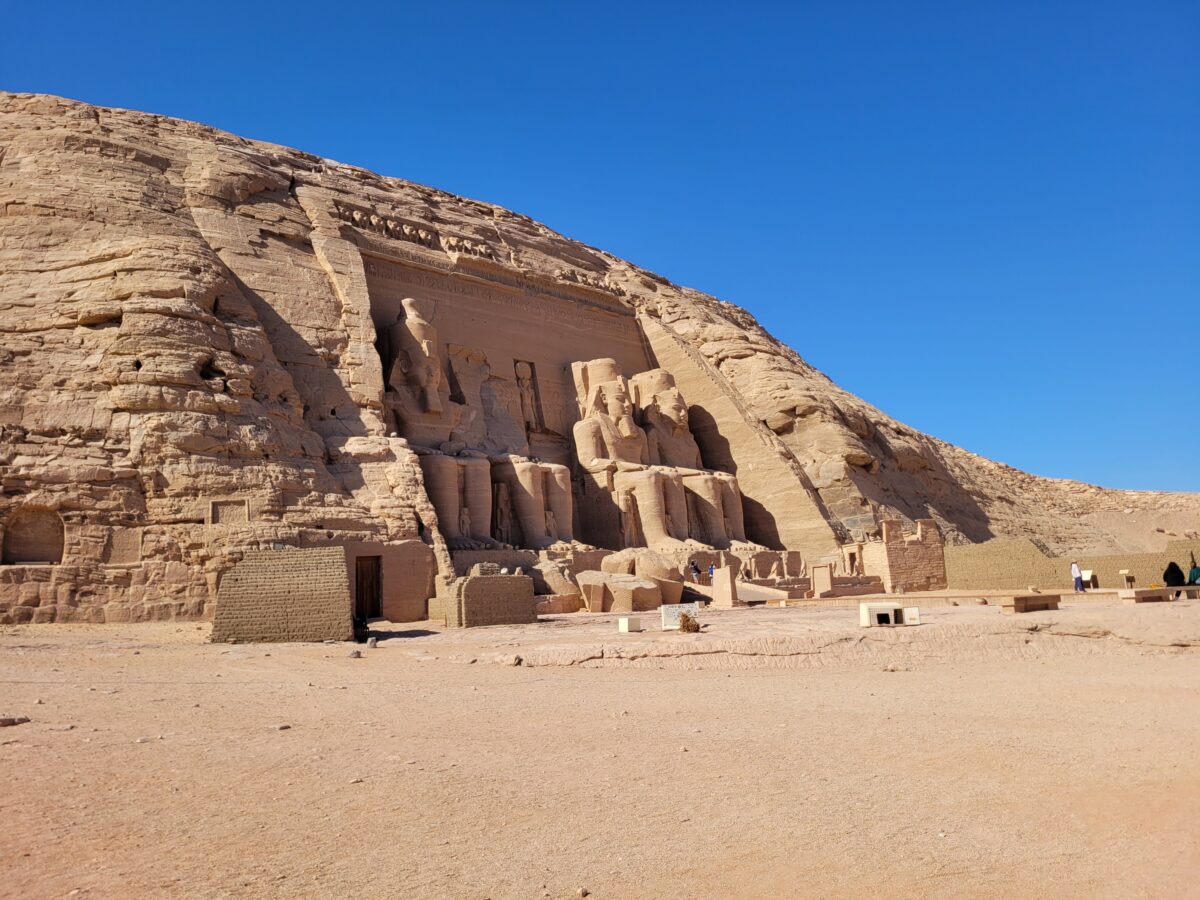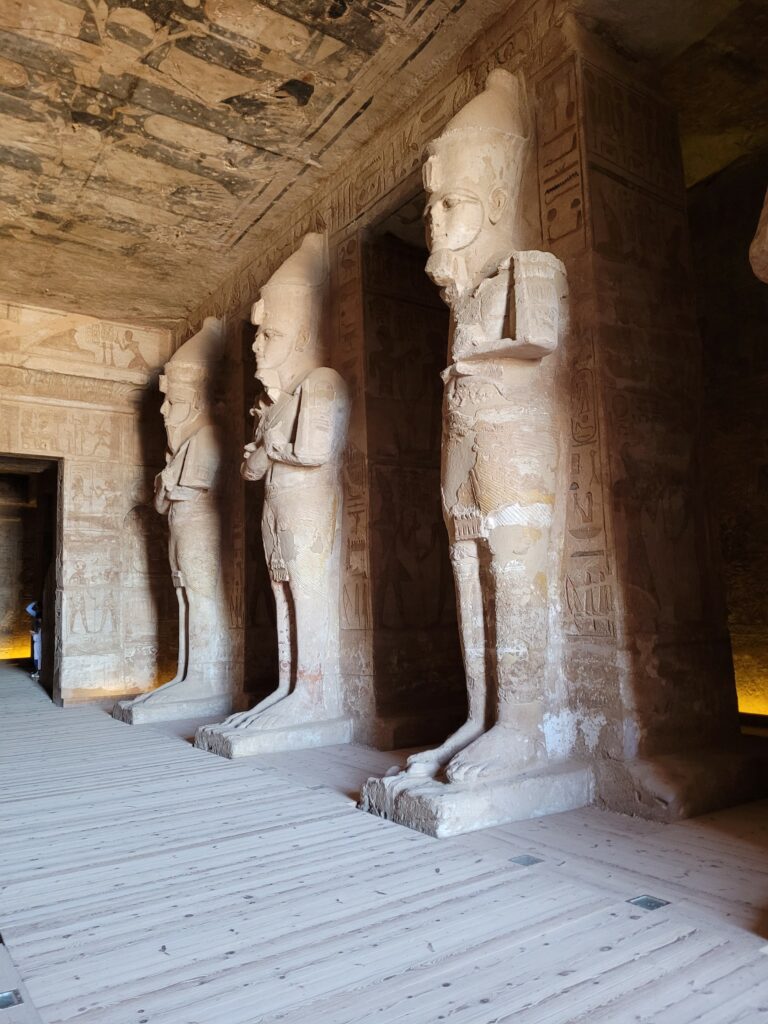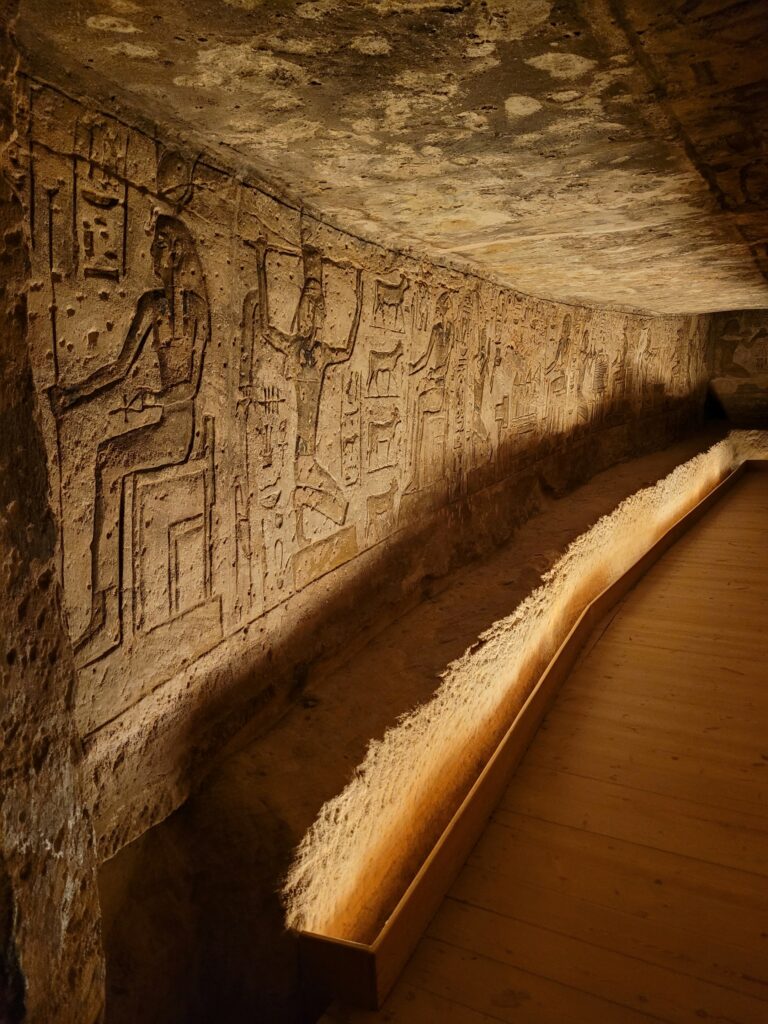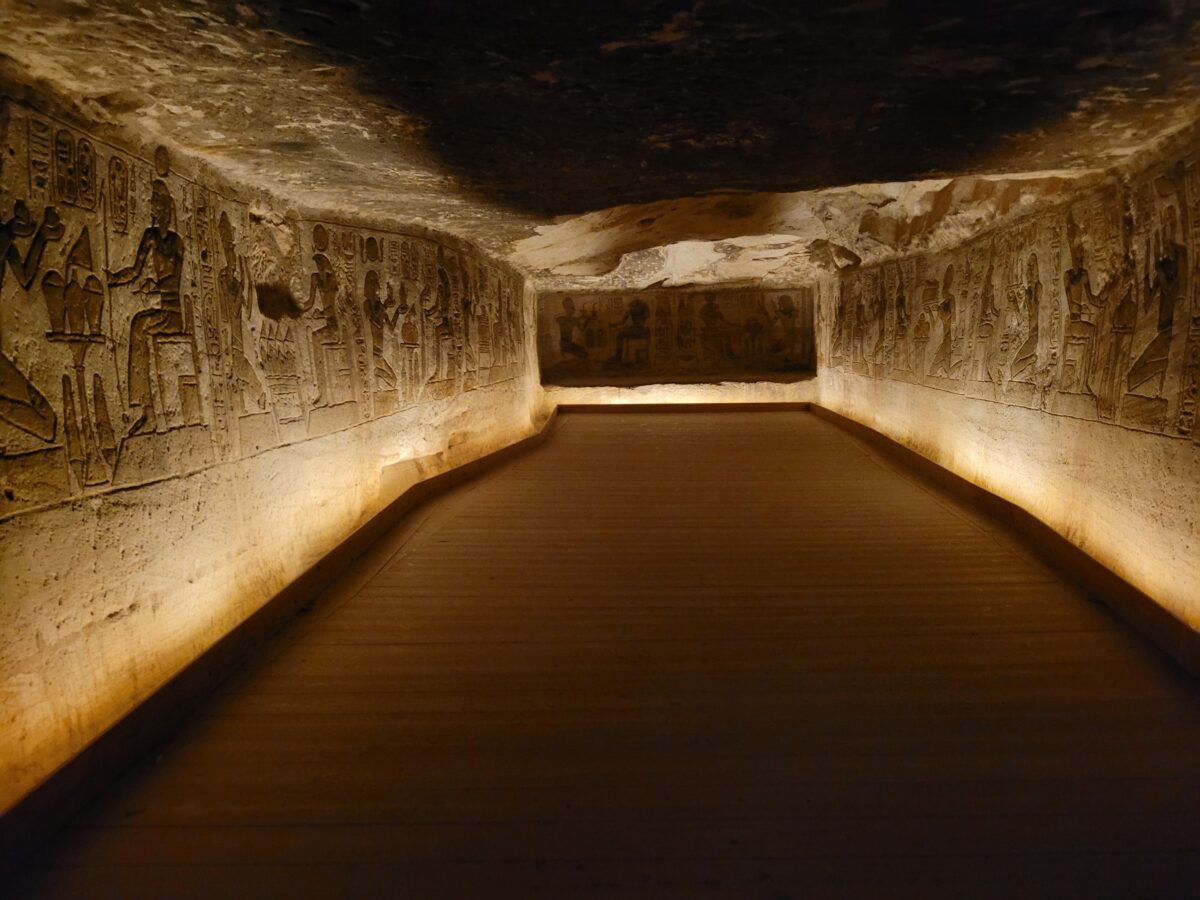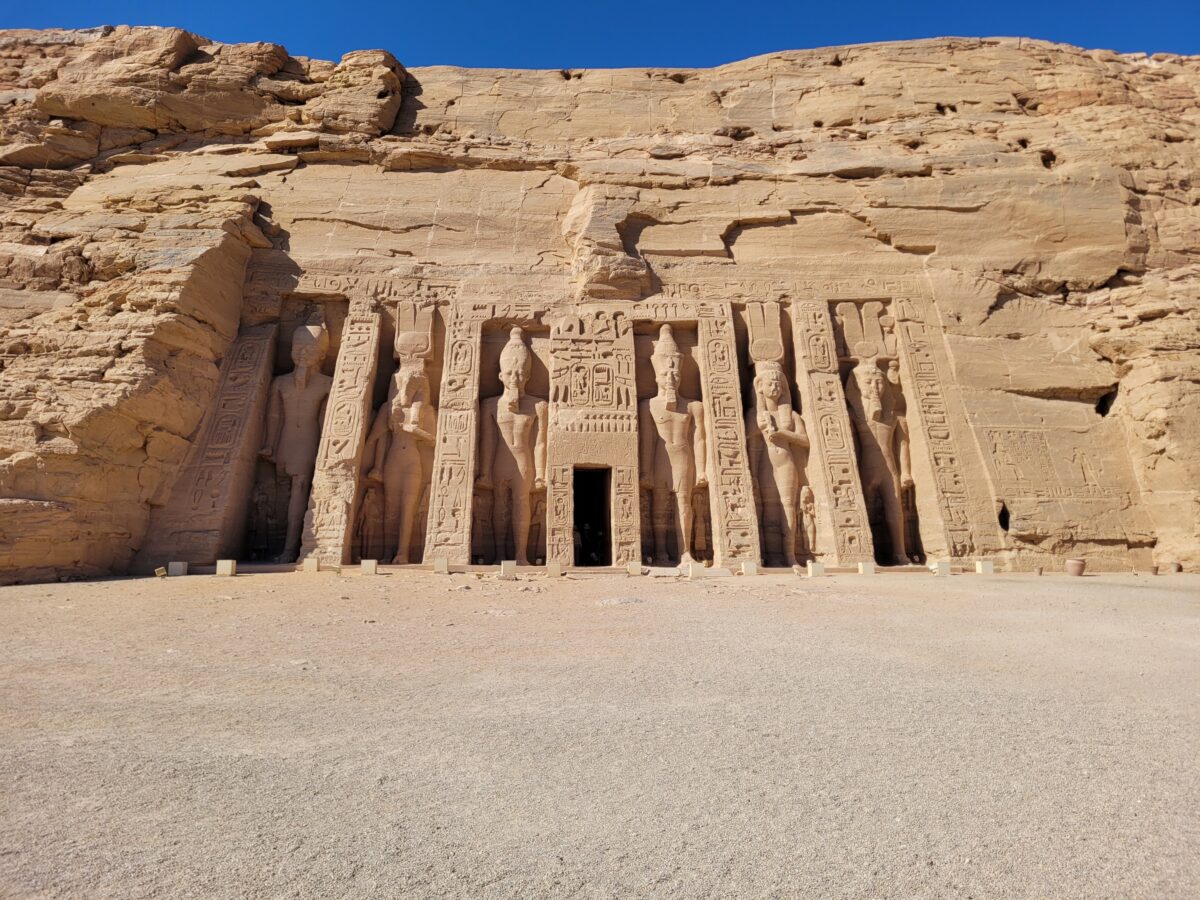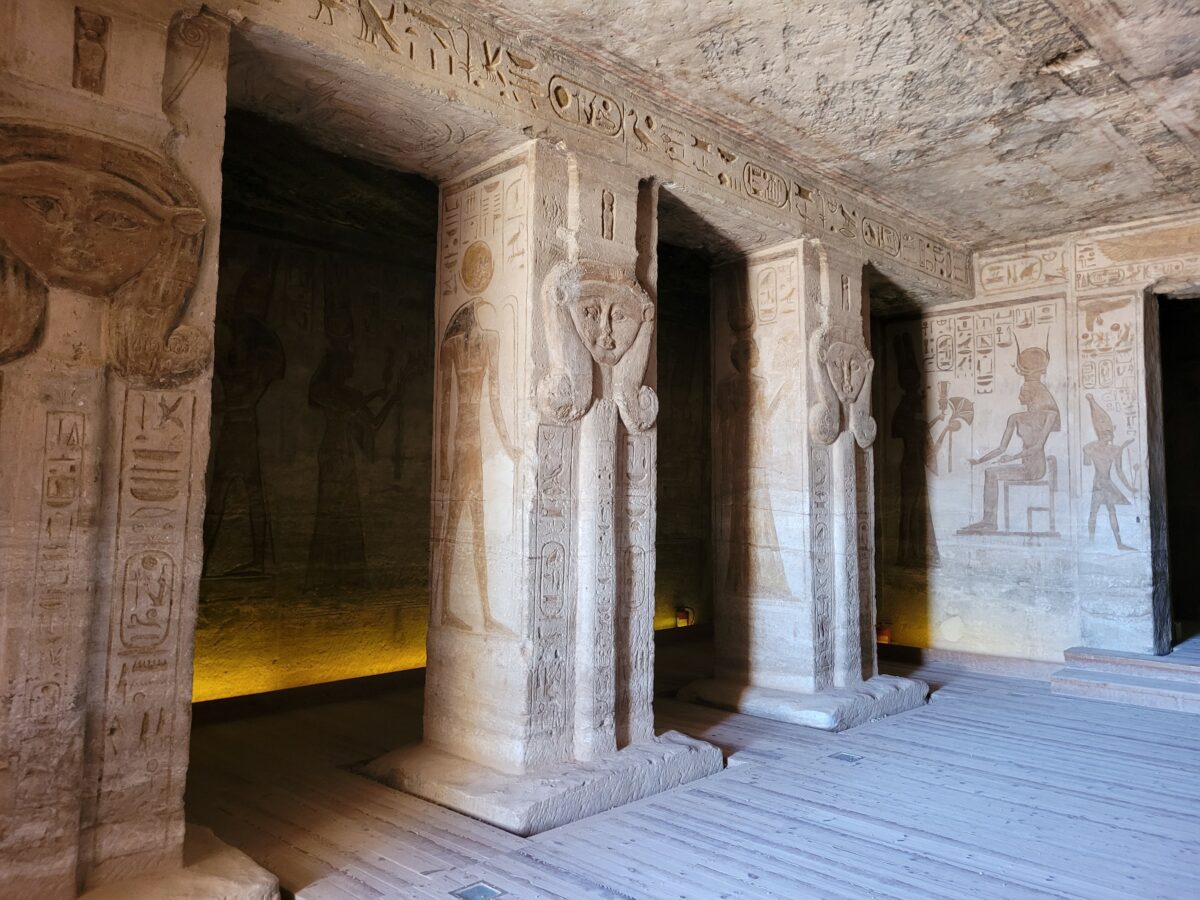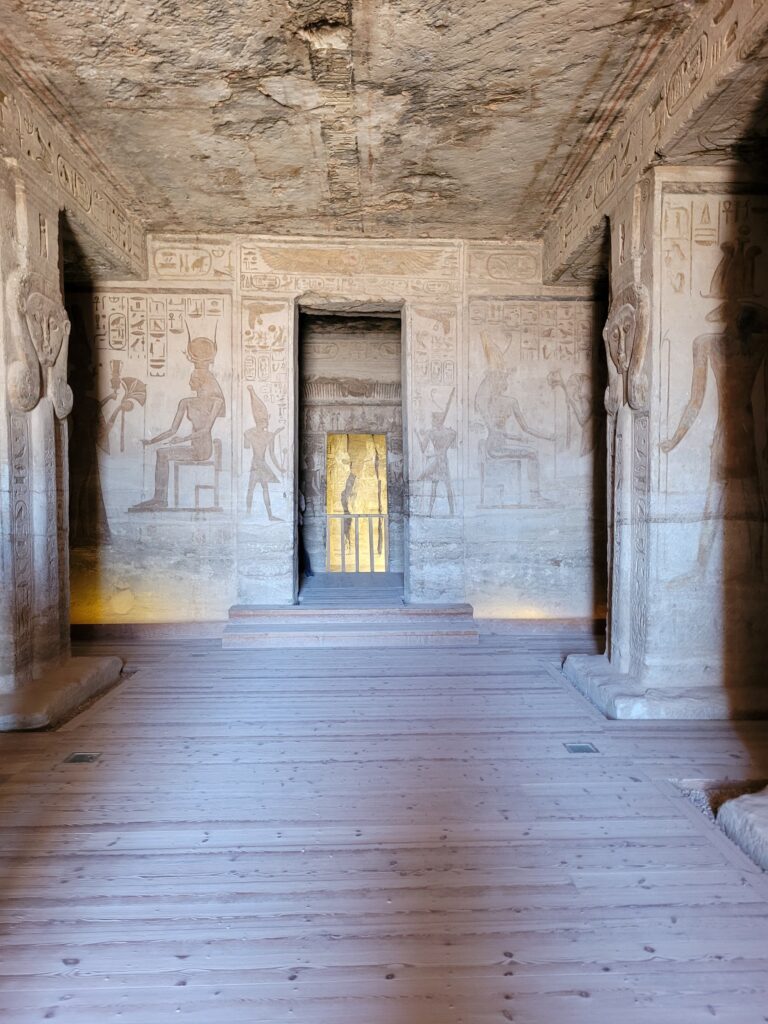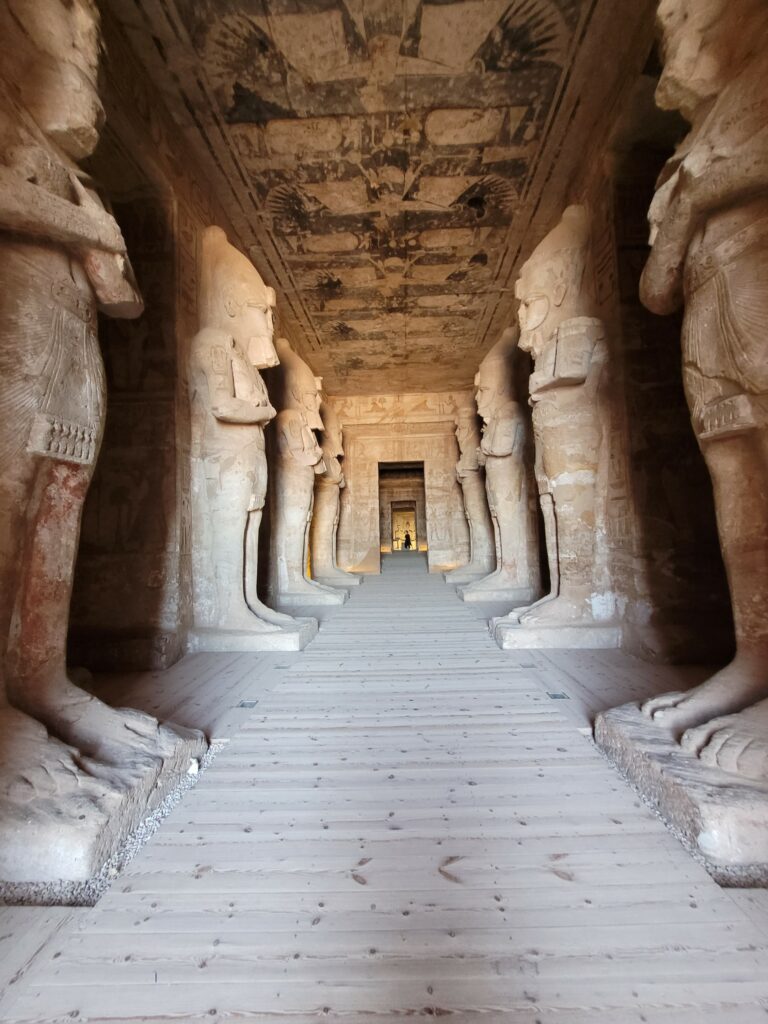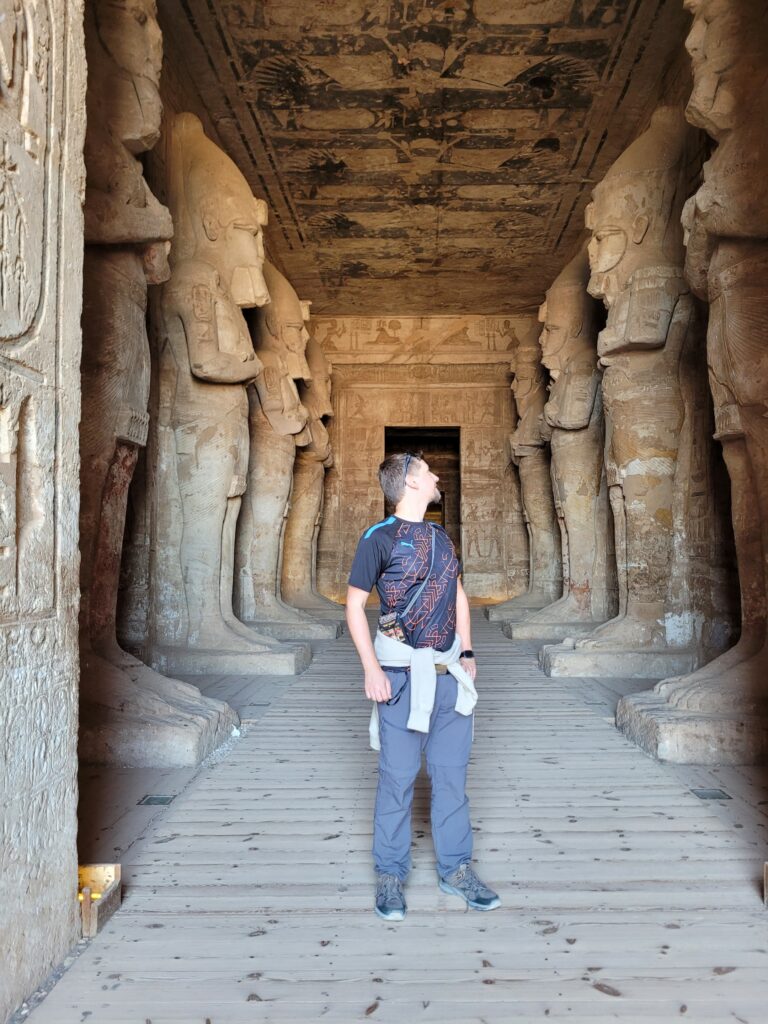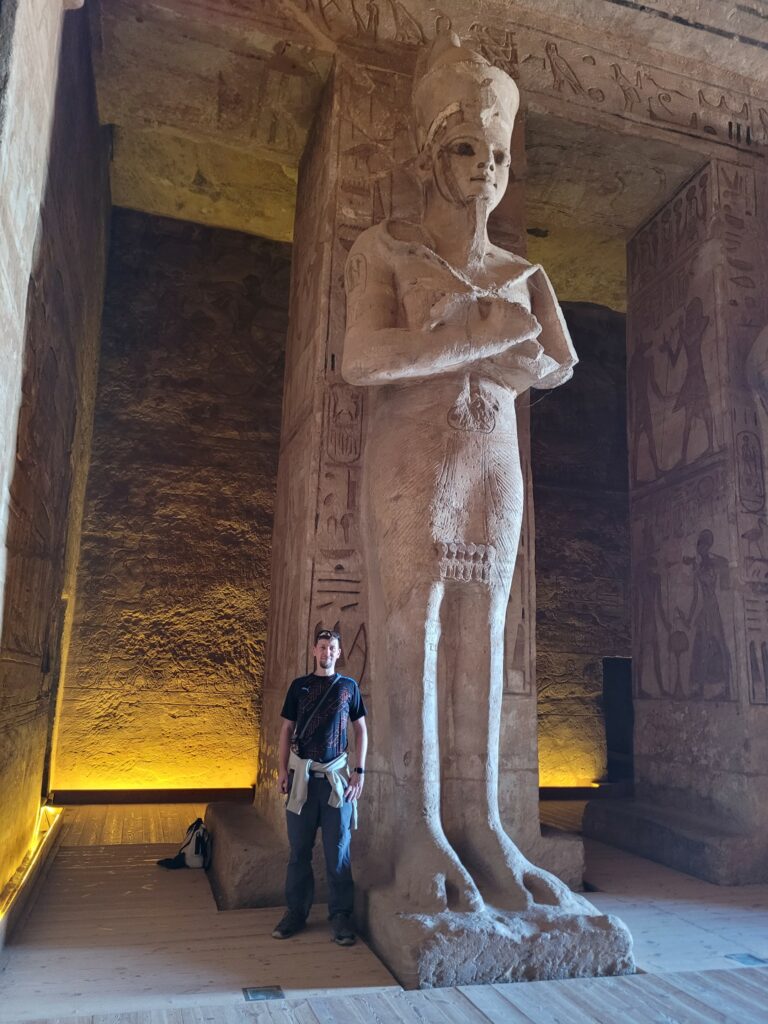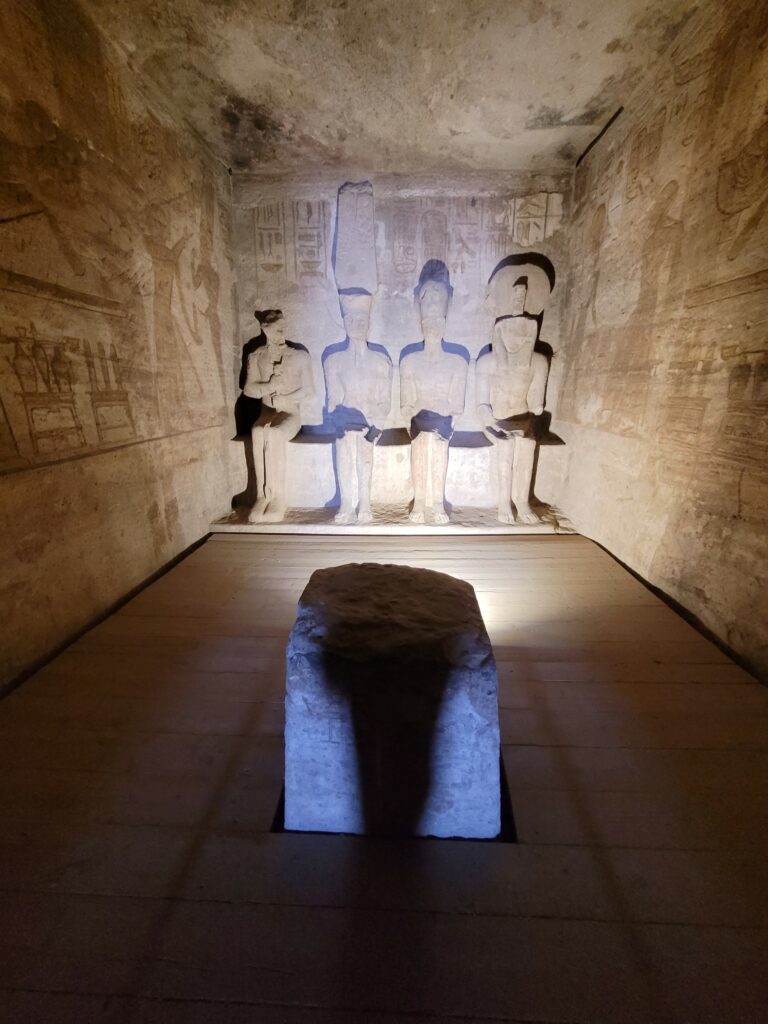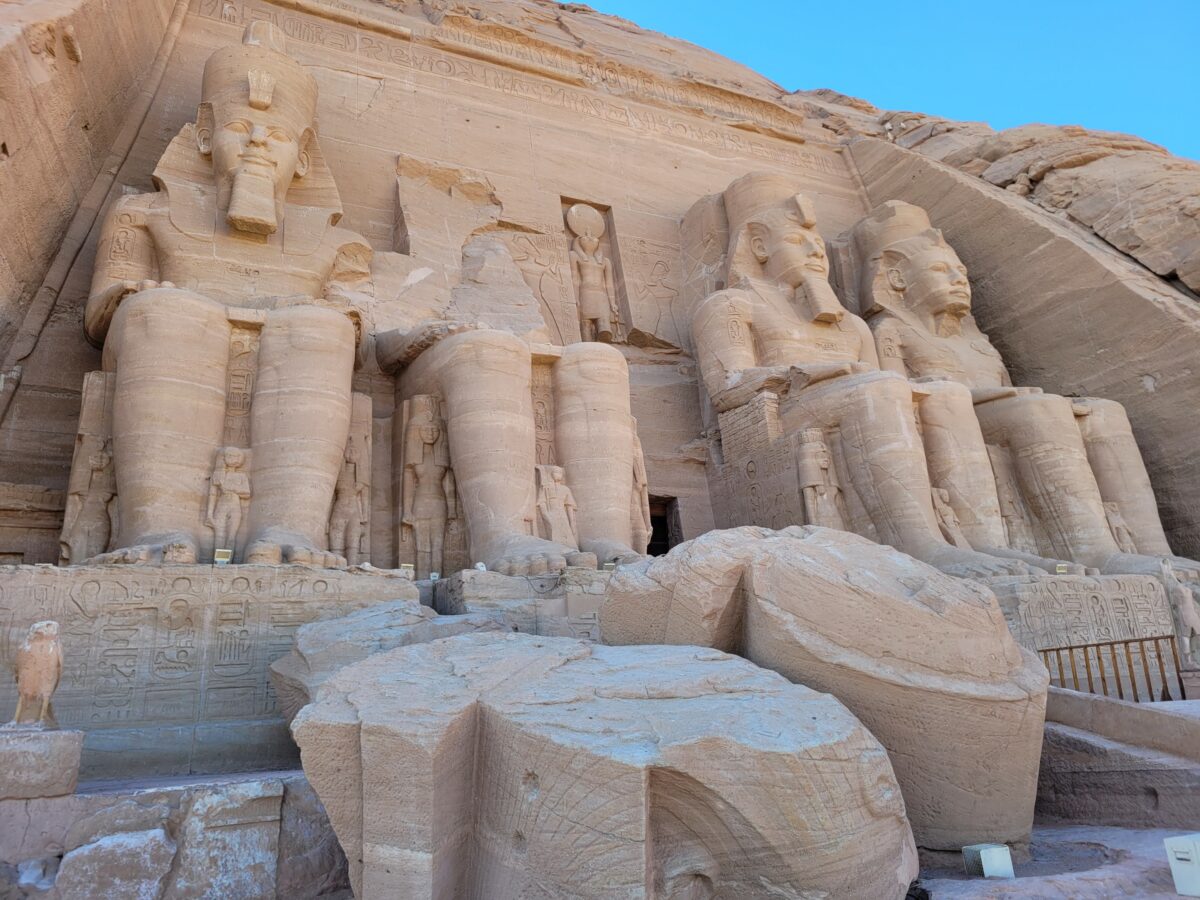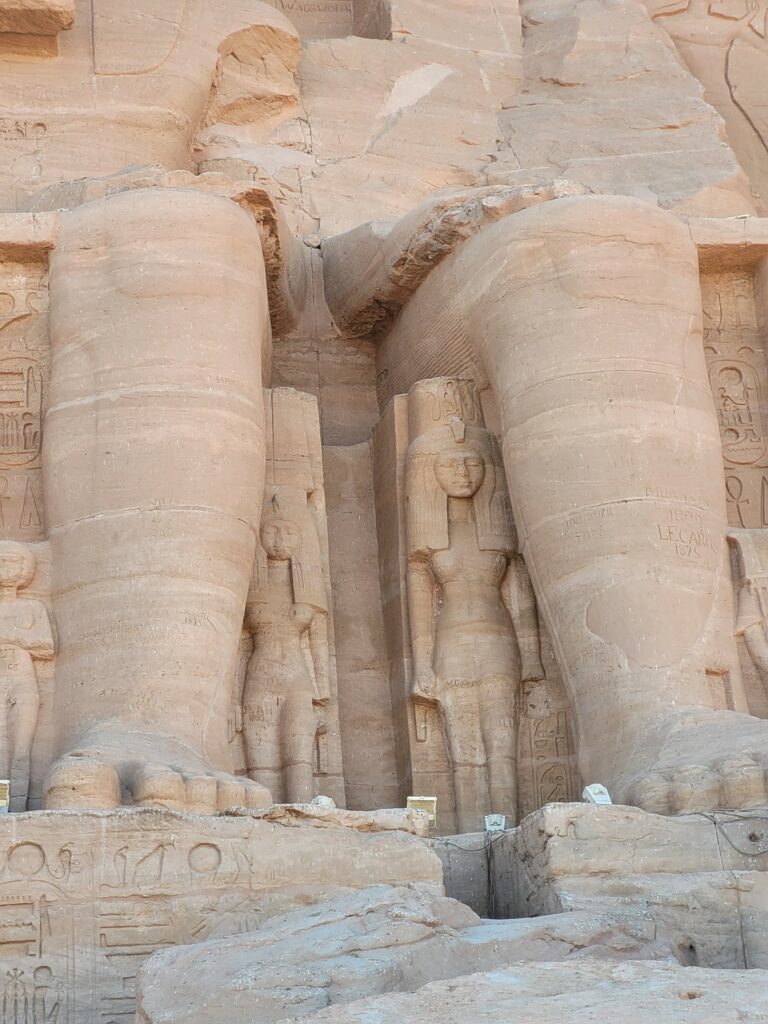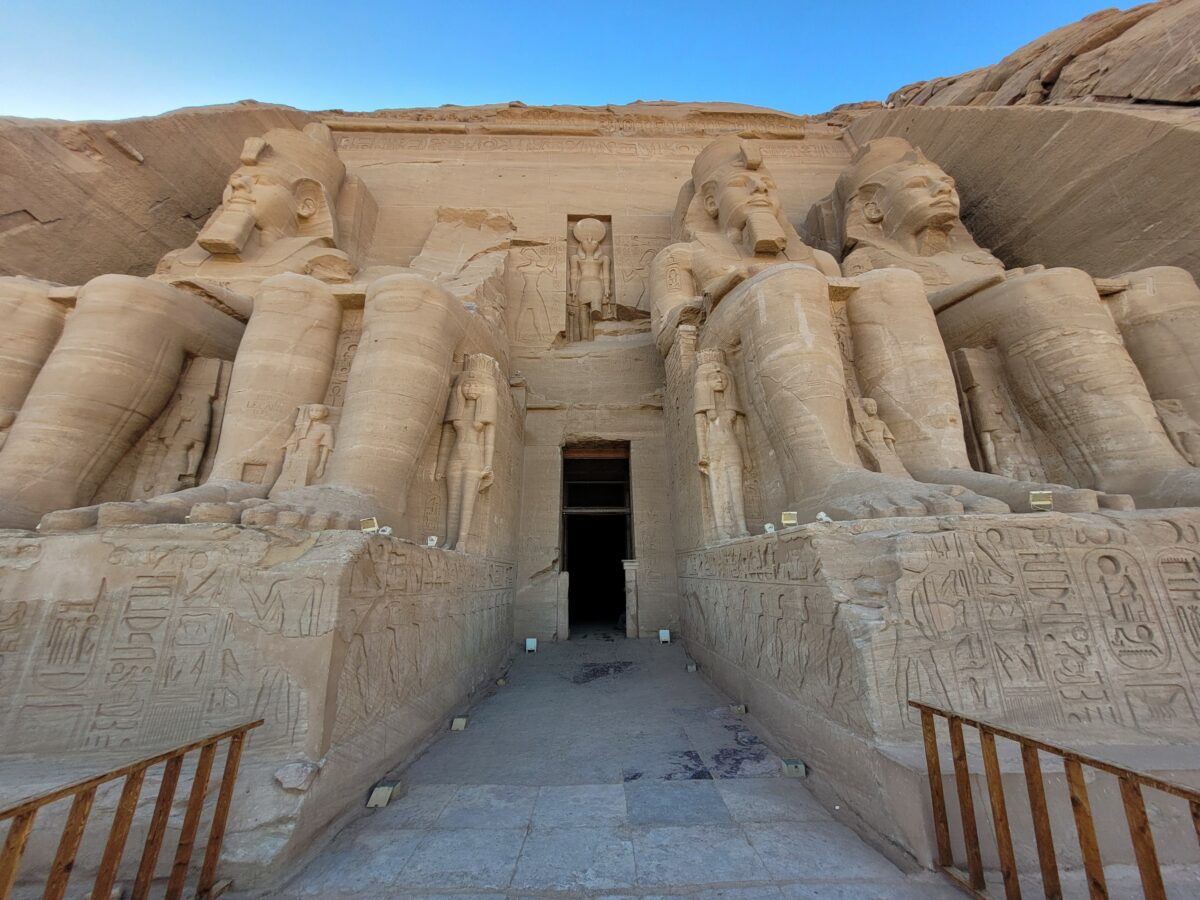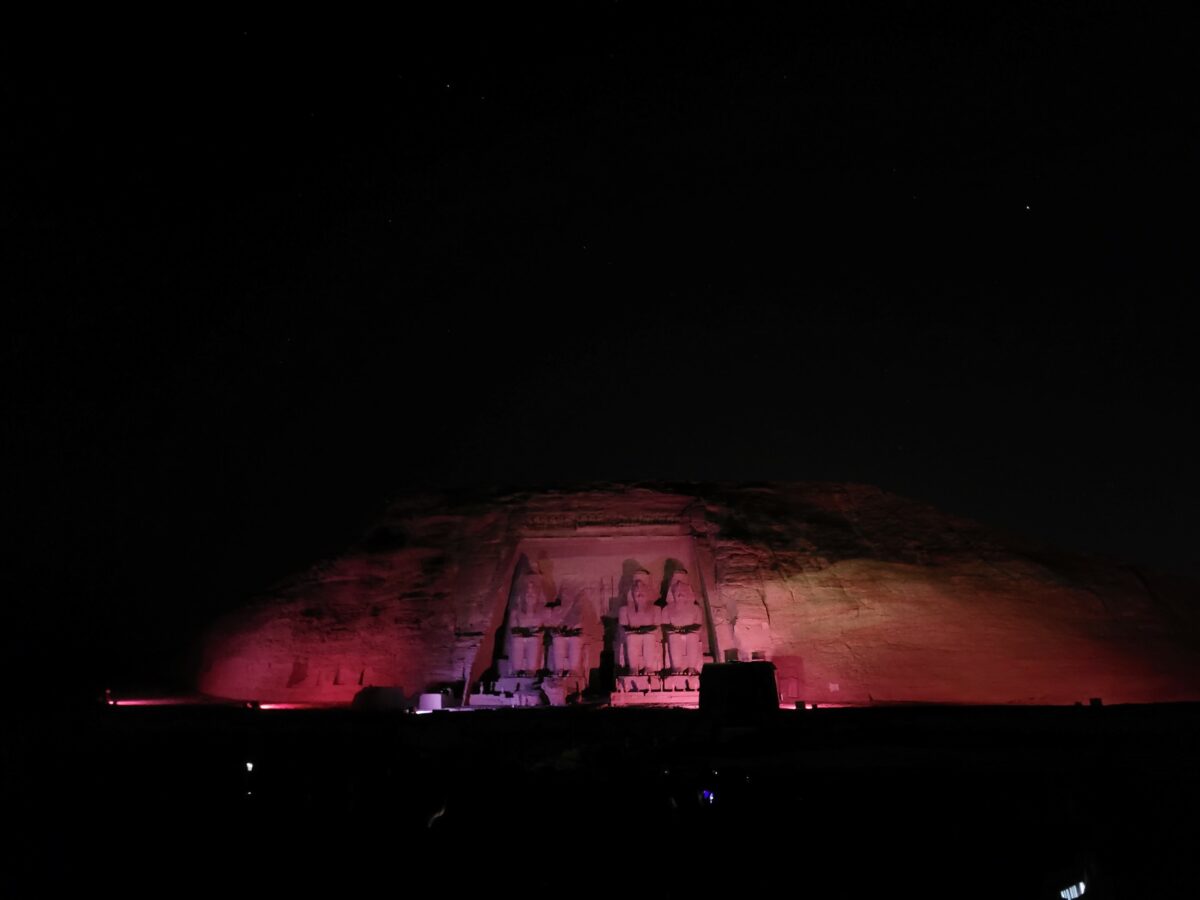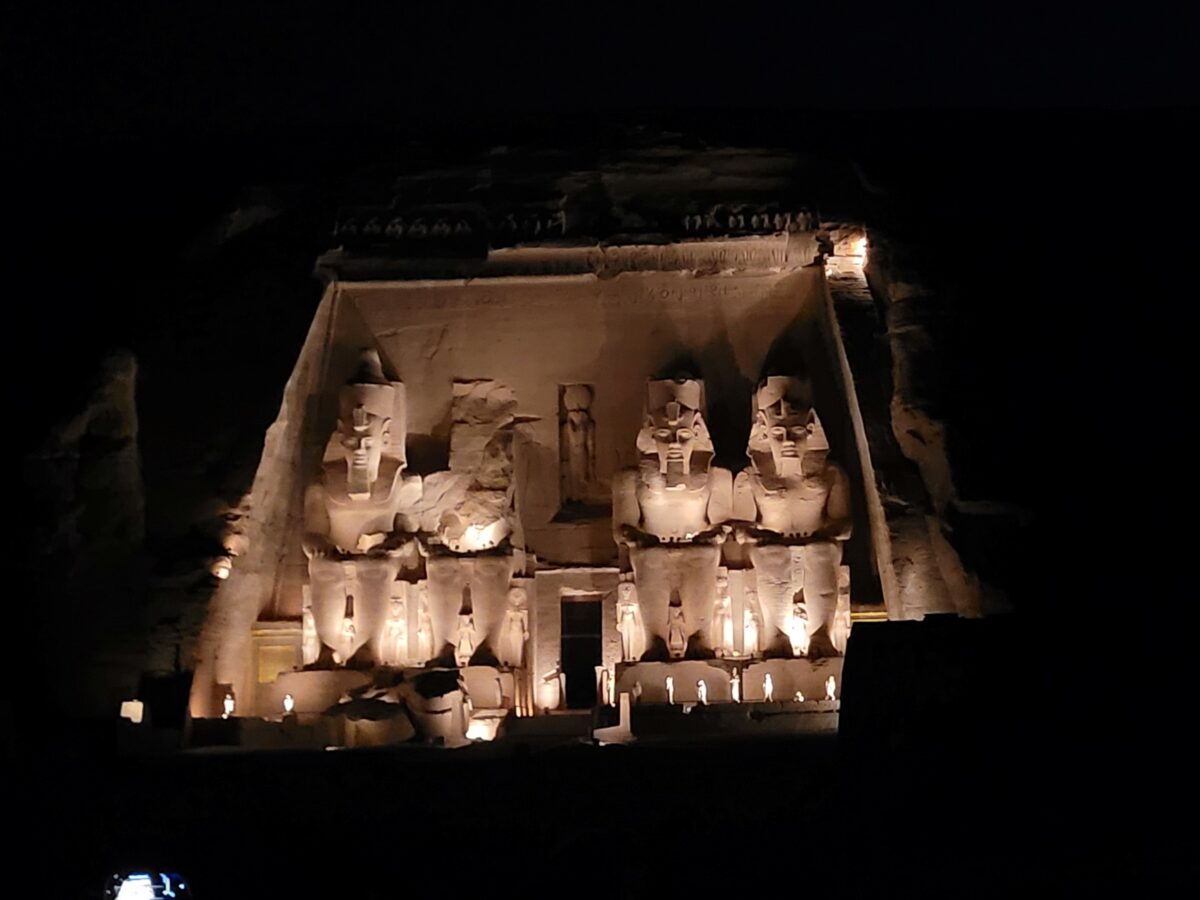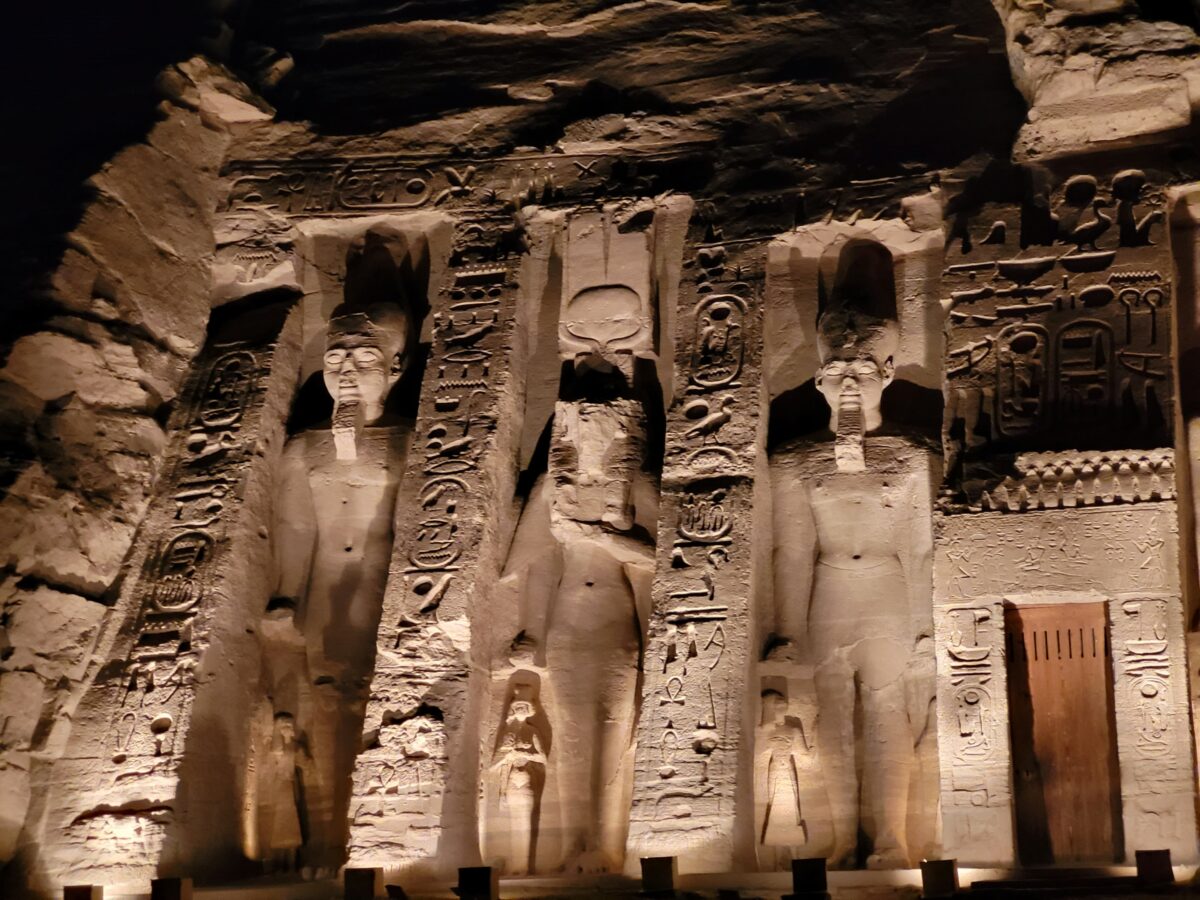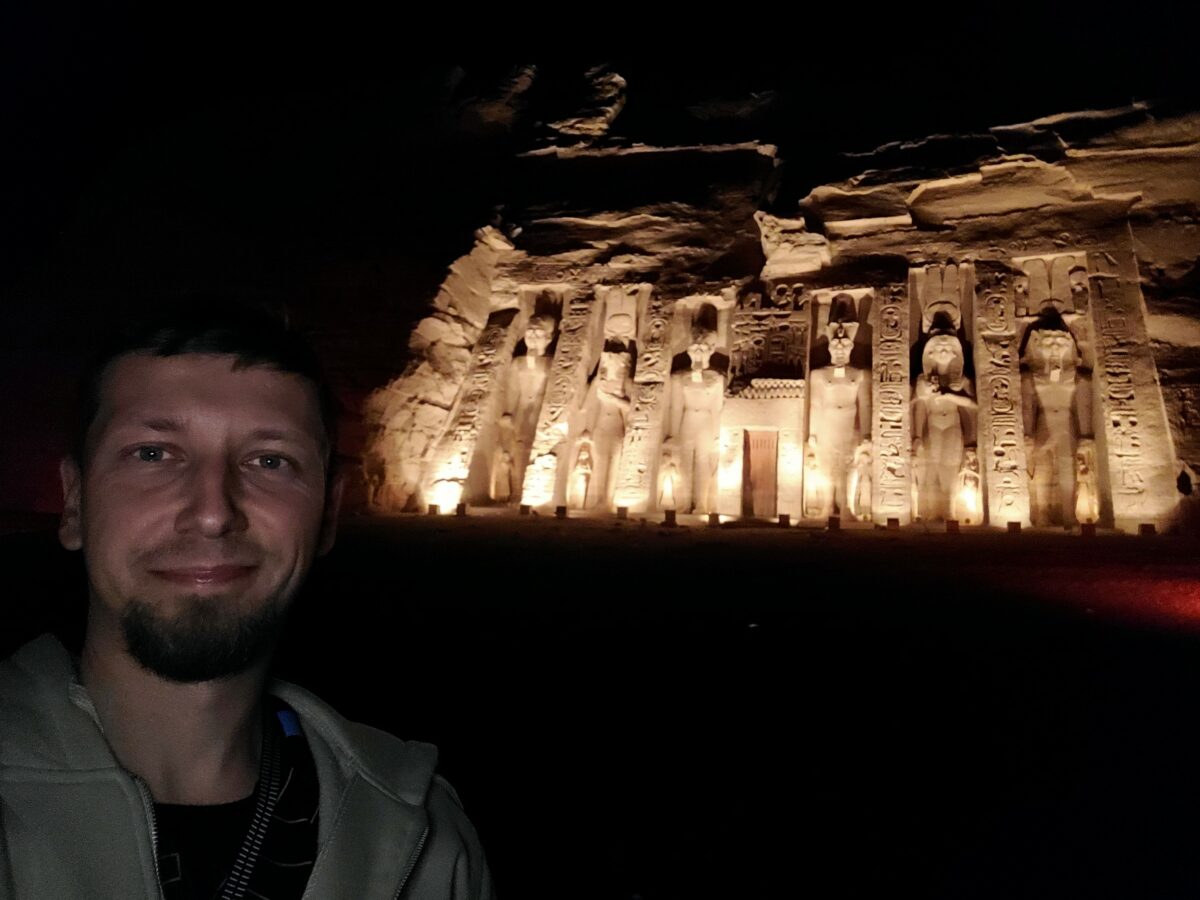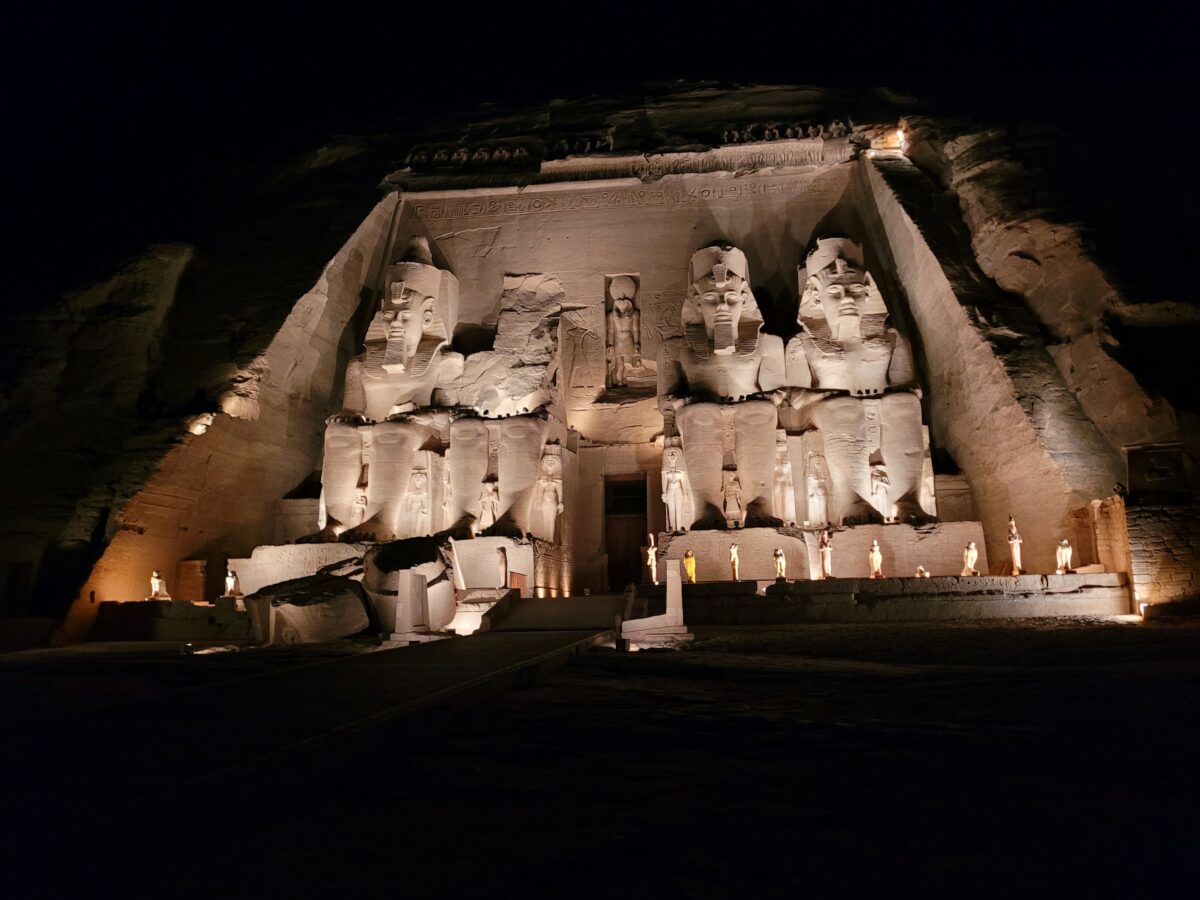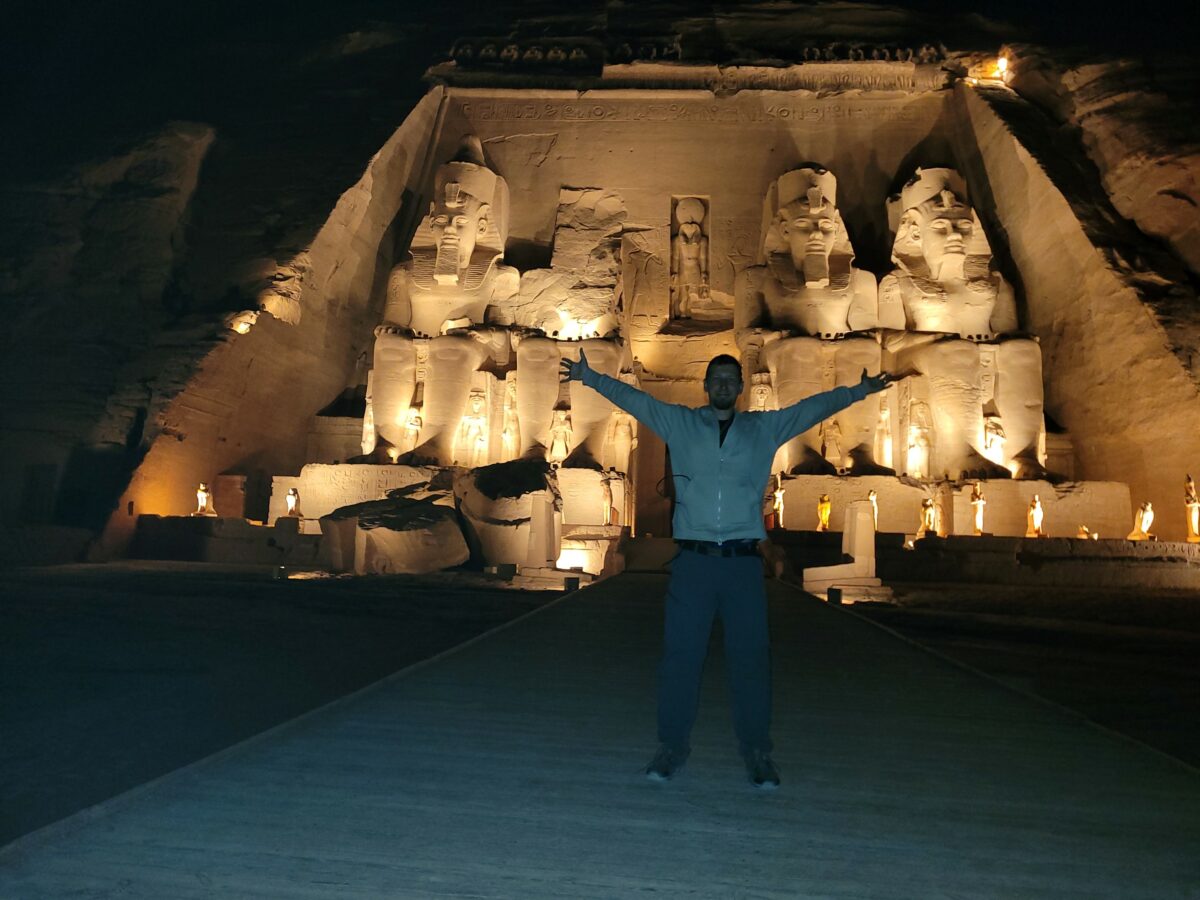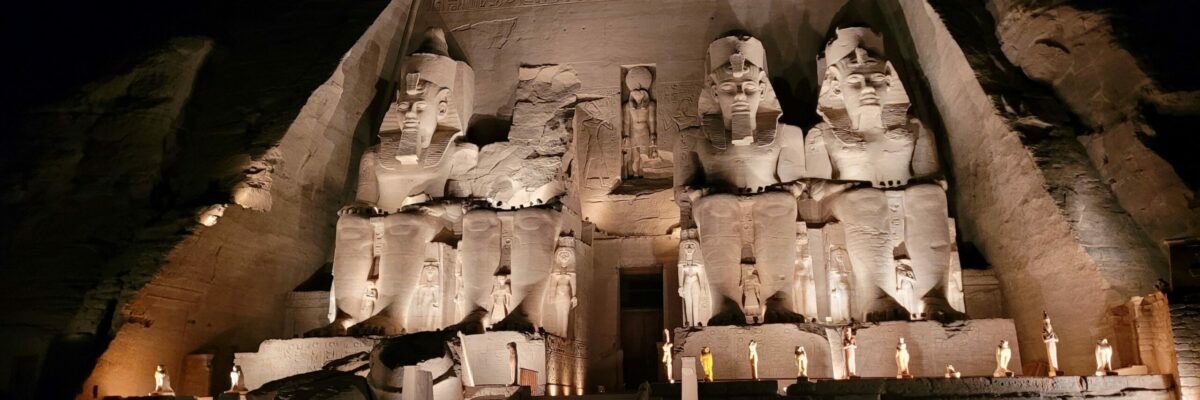
Abu Simbel, an archaeological site in southern Egypt, is famous for its monumental temples, which are among the most impressive ancient structures in the world. Constructed during the reign of Pharaoh Ramses II in the 13th century BCE, the temples of Abu Simbel are a remarkable testament to the power and grandeur of ancient Egypt.
Originally, the temples of Abu Simbel were situated a bit lower on the banks of the Nile. However, in the 1960s, due to the construction of the Aswan High Dam, which impounded the Nile and flooded the area, they were relocated in a spectacular rescue operation by UNESCO. The temples were moved to higher ground to protect them from the flood and ensure their preservation.
The main temple of Abu Simbel, also known as the Temple of Ramses II, is an imposing structure carved out of a massive rock cliff. The facade of the temple is flanked by four colossal statues of the pharaoh, towering majestically over visitors. Inside the temple are magnificent colonnaded halls, sanctuaries, and reliefs depicting the pharaoh’s military victories and religious ceremonies.
Adjacent to the main temple is the Temple of Nefertari, also known as the Temple of Hathor. This temple was built by Ramses II for his beloved queen Nefertari and is a remarkable example of Egyptian temple architecture. The facade of the temple is flanked by six statues of the goddess Hathor bearing the likeness of Nefertari, and inside are splendid colonnaded halls and wall paintings expressing the pharaoh’s love and devotion to his queen.
